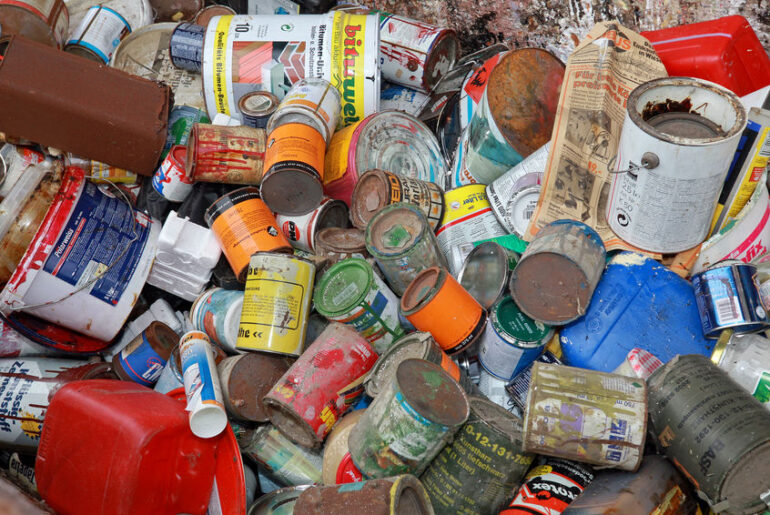
Homeowners and renters are often unaware that they cannot mix items considered hazardous waste in with their regular trash for pickup from a local waste management company. Instead, they must identify certain items as hazardous waste and make separate arrangements for their disposal.
Types of Household Items Classified as Hazardous Waste
The Environmental Protection Agency (EPA) classifies any household item that can explode, react, or catch fire in some circumstances as hazardous waste. Toxic or corrosive items also fall into this category. Examples include:
- Aerosols
- Anti-freeze
- Asbestos
- Batteries
- CFL lightbulbs
- Electronic waste such as non-working computers
- Fertilizers
- Household cleaners
- Oil
- Paint
- Paint thinner
- Pesticides
- Photo chemicals
- Poisons
- Solvents
People who have these items in their home must separate them from other trash and handle them in a safe and responsible manner.
Best Practices for Managing Hazardous Household Waste
Whether people own or rent their home, they are responsible for monitoring their usage, storage, and disposal of items that eventually become hazardous waste. In addition to not placing these items in the trash, people also cannot dump them down the drain, flush them down the toilet, dump them into drain sewers, or simply throw them outside in their yard.
People sometimes wonder why these laws exist because they do not see the hazards they cause right away. However, over time, household hazardous waste can create a human health risk and pollute the environment. Some types of hazardous household waste can cause serious injury to waste management company employees or contaminate septic systems.
Households with small children and pets need to be especially careful about guarding hazardous waste from curious hands or paws. Here are some additional tips on how to do that:
- Always follow instructions for proper use to avoid home accidents. This includes instructions for disposal.
- Keep potentially hazardous items in their original container. Never place them in a food jar or remove the original label. If the item is starting to corrode, homeowners and renters can call their local fire department or hazardous materials unit for further instruction.
- Keep in mind that empty containers of hazardous waste can still contain residue and require careful handling.
- When using an item around the house that has leftovers, never mix it with anything potentially hazardous. If the products are incompatible, they could explode or catch fire. Contaminated containers are also ineligible for recycling.
Where California Residents Can Dispose of HHW
San Mateo County offers a free Household Hazardous Waste Program that assists residents with recycling, reusing, or responsibly disposing of potentially toxic substances around the home. One option for disposal is to schedule an appointment for drop-off with the county. San Mateo County also offers scheduled pickups throughout the year for used oil and batteries. This link provides additional information about how to dispose of other types of hazardous household waste.
Santa Clara County has a similar program as San Mateo County for hazardous household waste. Also, residents can call 408-299-7300 or visit www.hhw.org to learn more or schedule a pickup appointment. Lastly ,most counties have similar programs, and residents should check with their local City Hall for details.




